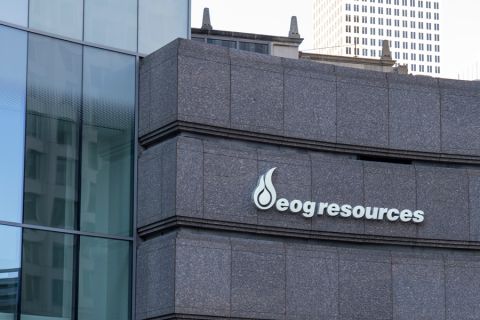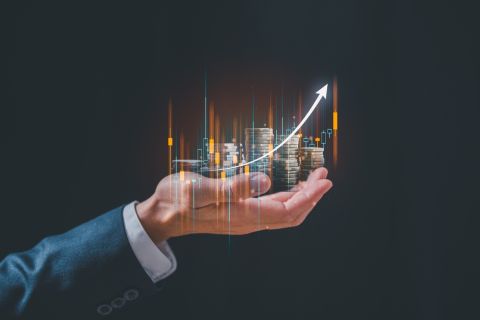As rumors of a possible sale die down, analysts are taking another look at Anadarko Petroleum Corp. (NYSE: APC) and some like what they see. In a recent report titled "What's so bad about Anadarko?" U.K.-based research firm Wood Mackenzie's Derek Butter said 2003 has been a mixed year for the Houston super-independent. Strong earnings recorded in the first three quarters offset a share price that has fallen to the low $40s from a 2001 high of more than $71. Rising finding and development costs and slowing reserve growth have tarnished the company's formerly stellar performance. To be fair, many of the industry's most respected players also have reported rising F&D costs this year and greater challenges replacing reserves and delivering production growth to meet investor expectations. But, the company has a lot on its plate around the world."2004 and 2005 should see a return to production growth," Butter said. "We believe the current portfolio offers a substantial array of growth opportunities across all its core regions. "Current negative market sentiment may be overdone." The analyst points to some good news for Anadarko. Between 1998 and 2002 it maintained overall F&D costs in line with its peer group at $6.78 per BOE and, with the exception of a drop in 2002, it had an "average organic reserve replacement ratio of 187%-ranking it best-in-class." Whether Anadarko is for sale or not, the employees are continuing to pursue their business plan. In a meeting with Houston energy reporters, the company's top two exploration executives reiterated their commitment to numerous exploration plays and to production growth. Production for 2003 should come in at 192 million BOE. "Rumors are rumors, but what I sense around here is momentum," said Jim Emme, vice president of exploration and a 23-year Anadarko veteran. "We are not sitting around waiting; we are out finding oil and gas. We feel we have the prospects and the people to deliver growth in the upper quartile." He said the company manages its "deep inventory" of prospects like a portfolio and chooses among five broad areas: U.S. Lower 48, Alaska, offshore, international and frontier areas. Anadarko has 13 million gross acres onshore the U.S. alone and has leased or has access to more than 500 offshore blocks-half in deep water. The company's potential in the eastern Gulf of Mexico, where it drilled the K-2 prospect, is turning out to be bigger than previously thought and more exploration is to come in Algeria, Emme added. Three wells are planned in Alaska's Naval Petroleum Reserve-A. The company increasingly sees a lot of potential from pursuing unconventional resources. "We want to go where the big resources are, for example, unconventional gas. The U.S. Geological Survey says that of the undiscovered resources in the U.S., 42% are tight sands, 10% are coalbed methane (CBM) and 40% are conventional sands." After four years of studying the royalty-free land grant or strip in the Rockies-included in Anadarko's purchase of Union Pacific Resources-the company appears poised to start a drilling campaign on those lands, and some of that will be in CBM plays. "We own the acreage forever, so we can dial it up or dial it down," said Mark Pease, vice president, U.S. E&P. "Because it also has CBM potential, we think it has multi-trillion-cubic-foot [gas] potential." Even more important than Anadarko's large acreage position, Pease said, is that it has the right systems in place to maximize exploration and exploitation. It drills 800 to 900 wells per year in the Lower 48. "When you work in that many places, you learn a tremendous amount. We have worked hard to establish a position in the basins we think are very prospective." Although the company is in some good international plays, "it is time to refocus and not be so spread all over the map," Emme said. "In some areas we need to finish our evaluation and proceed, or get out. This year and next you'll see us exit some areas." He mentioned disappointment in the Australian Bight. Anadarko will start bringing in partners as well, rather than drilling so many international wells with 100% interest. -Leslie Haines
Recommended Reading
Some Payne, But Mostly Gain for H&P in Q4 2023
2024-01-31 - Helmerich & Payne’s revenue grew internationally and in North America but declined in the Gulf of Mexico compared to the previous quarter.
Petrie Partners: A Small Wonder
2024-02-01 - Petrie Partners may not be the biggest or flashiest investment bank on the block, but after over two decades, its executives have been around the block more than most.
Murphy Oil Names Eric Hambly as President, COO
2024-02-08 - Murphy Oil has promoted Eric M. Hambly to president and COO and E. Ted Botner to executive vice president. Both will continue to report to CEO Roger W. Jenkins.
EOG Resources Wildcatting Veteran Billy Helms to Retire
2024-04-02 - Joining an EOG Resources predecessor in 1981, Helms is among the pre-1986-oil-bust generation who later found success in shale.
Thanks to New Technologies Group, CNX Records 16th Consecutive Quarter of FCF
2024-01-26 - Despite exiting Adams Fork Project, CNX Resources expects 2024 to yield even greater cash flow.





